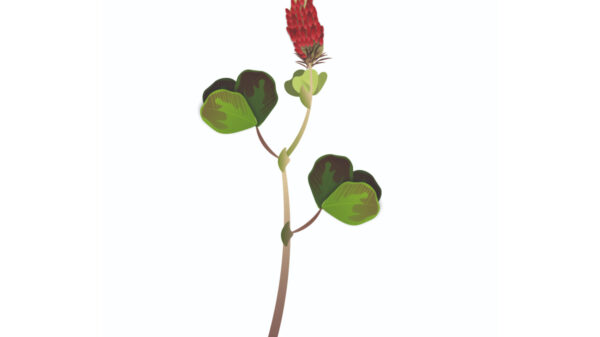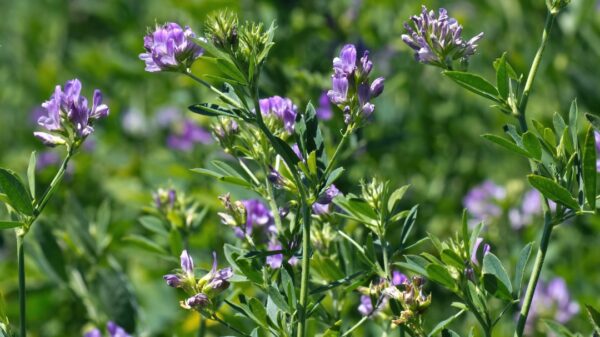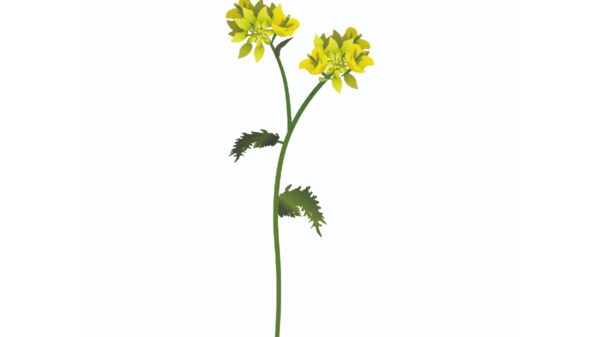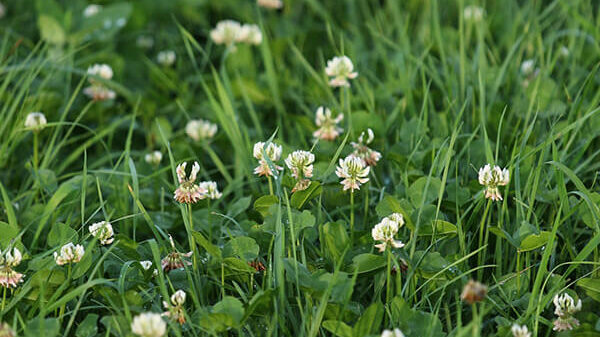Cover Crops & Game Cover
A cover crop is a non-cash crop grown primarily for the purpose of protecting and improving the soil which can be used repeatedly as part of a long-term farming plan. They can bring agronomic and environmental benefits to the land by adding nitrogen and organic matter to the soil, and research shows that improved soil characteristics and higher yields can be achieved when cover crops are grown in-between periods of regular crop production.
Our varieties are expertly bred by UK and European plant breeders and commercially tested before being brought to market.
Benefits of Cover Crops & Green Manure
- Stops soil erosion
- Suppresses weeds
- Prevents nitrogen leaching
- Adds organic matter to the soil
- Releases atmospheric nitrogen into the soil (legumes)
Mowing
Most green manure crops should be mown to help with weed control, especially when the cover crop is young. Mowing early can make the difference between a well established cover crop and one full of weeds. Most species can tolerate being cut fairly close to the ground which should help to control the weeds. Exceptions are Sweet & Crimson Clovers which shouldn’t be cut lower than 15-20cm and Vetch which shouldn’t be cut at all. Fortunately, Vetches are very quick to grow so mowing to avoid weed ingress is not an issue as it will compete well with any soil borne weeds.
Cutting not only cuts the top off the weeds but also encourages the cover crop to grow lush green material and delays the crop growing to seed. If not topped, most crops will go stemmy and make them more difficult to incorporate into the soil.
Ideally, it is best to remove the cuttings, especially with legumes as this encourages them to fix more nitrogen. The clippings, if left on the ground will start to rot, releasing nitrogen which will suppress the growing plants to fix more atmospheric nitrogen. If removing the clippings is impractical (which it is in many cases), using a flail mower should help to distribute the cut material more thinly and evenly across the field.
Incorporation
Sowing the next crop
Innoculants
Choosing the right Cover Crop
Choosing the right cover crop for your needs is important as different species have different attributes. Some crops are quick-growing for short term covers, others are slower growing but more winter hardy therefore better suited to autumn sowing where the cover is required over winter or even longer.
After being incorporated back into the soil, different crops release the Nitrogen at different rates this means that a cover crop can be matched accurately to the needs of the following crop.
Green Manure & Cover crops
Species | Fixed/Holder | Duration | N Release | Spring/Autumn |
|---|---|---|---|---|
Red Clover | Fixer | 1-3 Years | Quick | Spring/Autumn* |
White Clover | Fixer | 2-5 Years | Quick | Spring/Autumn* |
Yellow Trefoil | Fixer | 6-18 Months | Quick | Spring |
Crimson Clover | Fixer | 6-9 Months | Quick | Spring |
Sweet Clover | Fixer | 6-18 Months | Quick | Spring |
Vetch | Fixer | 6-10 Months | Quick | Spring/Autumn |
Lucerne | Fixer | 2-4 Years | Quick | Spring/Autumn* |
Forage Rye | Holder | 6 Months | Slow | Autumn |
Mustard | Holder | 2-4 Months | Slow | Spring/Autumn* |
Buckwheat | Holder | 4-6 Months | Moderate | Spring/Summer |
Phacelia | Holder | 4-6 Months | Slow | Spring/Summer |
Italian Ryegrass | Holder | 6-12 Months | Slow | Spring/Autumn |
Sainfoin | Fixer | 2-4 Years | Fast |
Green Manure & Cover crops

Buckwheat
Not a Nitrogen fixer but a rapidly growing annual crop that will not only lift nitrogen from the soil but will also scavenge for phosphate which is also taken up and released for any subsequent crop on incorporation. Buckwheat produces a large amount of biomass and although it’s large leaves give generally good weed suppression, some of the ground hugging weeds may survive under the canopy.
With a high seeding rate a relatively expensive seed, Buckwheat has a limited appeal for green manure use and tends to be used more in the UK for game cover. The ideal sowing time is April or May when there is no risk of frost.
Suggested sowing rate 70 kilos/hectare (30 kilos per acre)

Crimson Clover
An annual clover, grown to produce a rapid boost in soil fertility. It is especially useful for short breaks in intensive horticulture. Like most clovers, Late March – Early May or Mid – Late August are the best times to sow for a successful establishment.
Suggested sowing rate 15 kilos/ha (6 kilos/acre)

Forage Rye
Although not a legume, because it grows in colder temperatures than most crops, Forage Rye is the ideal crop for holding Nitrogen and reducing leaching over the winter period. It is normally sown on its own or in combination with Vetches to give an excellent winter hardy cover. Because of its cold tolerance, it can be sown later than any other green manure crop, being sown in September or even October. It establishes quickly and gives excellent weed control. Because of the high sowing rate, Rye tends to be one of the more expensive of the cover crops although the later sowing time means that it has the distinct advantage that there is less of a rush to get it in after the previous crop than the majority of other cover crops.
Suggested sowing rate 180 kilos per hectare (75 kilos per acre)
Organic seed is sometimes available

Italian Ryegrass
One of the most rapidly growing grasses, Italian Ryegrass can be sown as a pure stand or with Red Clover or Vetches. It will go over 1 or 2 winters and has a certain amount of frost tolerance although topping prior to the winter is always an advantage. It will produce large amounts of green material but needs topping regularly during the growing season to prevent it going stemmy and producing seed heads. Italian Ryegrass can be sown from Late March to Late April or August to Late September.
Suggested sowing rate 35 kilos/hectare (14 kilos/acre)
Organic seed is normally available

Lucerne
UK livestock farmer are now showing interest in Lucerne, it has the potential to provide yields of 10-15 tonnes of dry matter per hectare. Lucerne is highly digestible, with high protein, rich in trace minerals and is an excellent source of fibre. With the added advantage being a legume, it will fix nitrogen too.
Typical silage analysis
- ME 9.7-11.1MJ/KG/DM
- Crude Protein 16-24 %
- D-value 70D
- PH 4-4.6
These nutritional values will save on farm imported proteins.
It is typically grown as a stand-alone crop, and usually grow for silage, but it can be grazed. With good management practices it will persist for 5-6 years. Modern varieties have been selected for their suitability for the northern European climate and are therefore suitable for the UK. Lucerne will leave considerable residual nitrogen allowing following crops to thrive. Lucerne suits most soil types however, it prefers soils that are well drained, a pH between 6.2 and 8.5 (ideally pH7), and where perennial weeds are not an issue.
Lucerne can be grown successfully with grass as a mixture. During drought periods as we have experienced of late in the UK and due to Lucerne’s drought tolerance, dry matter yields from grass and Lucerne mixtures have been several times higher than grass alone.
To get the best returns from Lucerne:
- Select a variety that is suitable for the UK
- Time between cuts a minimum of 5 weeks
- Optimal cutting height of 7cm
- Cut when at the flower buds
- Allow to flower once a year to allow nutrients to be stored in the tap root giving winter hardiness and early spring growth.
Sowing Date: From April through the spring. Summer sowing in August and early September will result in heavier crops the following spring.
Sowing Rate: Sowing rate of 8 kilos per acre as a straight stand, or as a mixture 50% Lucerne and 50% Grass up to 70% Lucerne and 30% Grass.

Mustard
Mustard is one of the cheapest cover crops and grows rapidly lifting nitrogen from the soil and holding it until ploughed in. Because of its quick growth it is an excellent weed suppressant. Mustard can be sown any time after late March and will flower after around 6 weeks so is a very short term cover crop. Mustard doesn’t require topping during its growth stage but it is best to top it before incorporating.
Suggested sowing rate 20 kilos/hectare (8 kilos/acre)
Organic seed is normally available
Cover Crop Mixtures

Summer Sown Cover - SOH3
50% Vetch
30% Linseed
10% Phacelia
10% Buckwheat
- Fast growing
- Improves soil structure
- Can fix up to 50kg/ha of nitrogen for following crop
- Will attract bees and other insects – can be cut for silage or left into 2nd year
Suggested sowing rate 15 kilos per hectare (6 kilos per acre)

Rapid Cover Mix - CSAM2
50% Mustard
10% Phacelia
30% Oil Radish
10% Tillage Radish
- Grazable
- Rapid establishment
- Boosting soil structure
Suggested sowing rate 12.5kg kilos per hectare (5 kilos per acre)

Winter Cover Crop - CSAM2
30% Vetch
10% Mustard
10% Berseem Clover
10% Oil Radish
40% Forage Rye/Black Oats
- Quick Growing
- Large amounts of biomass
- Good balance of fibrous roots and long taps roots to improve soil structure
- Will lift and retain any residual nutrients from previous crop
Suggested sowing rate 20-25 kilos per hectare ( 8-10 kilos per acre)

Organic Nice and Easy Mix - CSAM2
70% Organic Mustard
30% Stubble Turnip
- Quick growing
- Good ground cover and weed suppression
- Excellent weed suppressant
- Can be grazed
Suggested sowing rate 10 kilos per hectare (4 kilos per acre)


Organic Soil Improver - SOH2/3
70% Organic White Mustard
10% Fodder Radish
10% Berseem Clover
10% Crimson Clover
- Rapid establishment
- Will help improve soil structure and fix nitrogen
- Gives good ground cover to suppress weeds
Suggested sowing rate 12.5 kilos per hectare (5 kilos per acre)


Soil Improver - SOH2/3
70% White Mustard
10% Fodder Radish
10% Berseem Clover
10% Crimson Clover
- Rapid establishment
- Will help improve soil structure and fix nitrogen
- Gives good ground cover to suppress weeds
Suggested sowing rate 12.5 kilos per hectare (5 kilos per acre)
Game Cover Mixtures
Our various dual-purpose game cover mixtures can provide excellent cover during the season and be grazed by livestock once the season is over. Selected with an emphasis on high productivity, yield and strong environmental credentials, our wide range of cover crops and game cover crops are expertly bred by UK and European plant breeders and are commercially field-tested for a minimum of two years before they reach the market.
For more details, please get in touch with the team.
